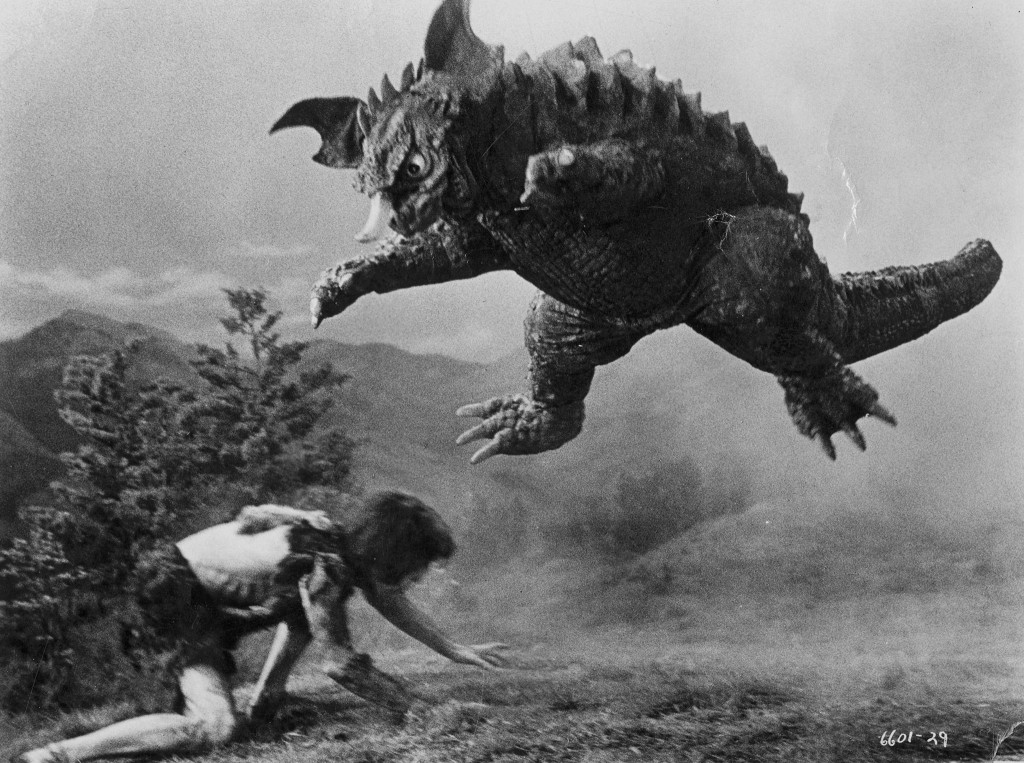War of the Garganutas – 1966, Ishiro Honda – Japan
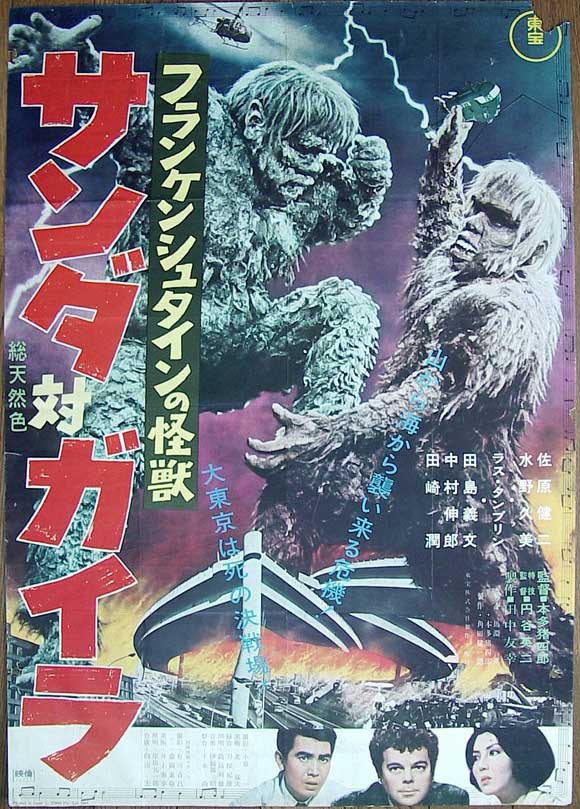
War of the Gargantuas is a half-hearted sequel to Toho’s wacky ass Giant Frankenstein movie Frankenstein Conquers the World. We pick up where we left off for War of the Garganutas, but we also go ahead and rewrite the past more than a little, because, as you should know by now, sometimes Toho likes to turn it’s baseball cap around, light up a cigarette, and flash a big ol’ “F You” middle finger to continuity. This is one of those times.
THE PLOT ~ When a large, scaly, blue-greenish, humanoid sea monkey with a flat top who is not at all similar to Frankenstein in any way apart from the aforementioned Flat top begins to terrorize Japan, the press is quick to lay blame on Frankenstein, the famous European monster which had been imported, and then enlarged to traditional Japanese monster scale some years back. However, the scientists responsible for the creation of this recent Frankenstein balk at this suggestion, on the grounds that A) Franky don’t live under water and B) Franky don’t live at all, he is dead, dead as hell. At this point I’ll go ahead and point out that despite what you may have seen in the previous film, from within the confines of War Of The Gargantuas, this “Frankenstein” was born a strange, ape like creature, for absolutely no reason, and his creation now seems to have been achieved through genetic experimentation, rather than through the much more simple act of a child eating a radioactive monster heart. So, now you’re up to speed.
Soon, this alleged “Frankenstein” from under the sea begins to attack more frequently, and even wades up onto shore to gobble down some screaming humans, which, obviously, can’t be allowed to happen very often. It is confirmed through science that this is, in fact, a damn Frankenstein, despite his newfound love for livin’ la vida agua, as well as his now much more aggressive and violent temperament. “How can this be,” our scientists wonder, “he used to be such a nice monkey franken-creature.” Well, turns out, this is a new, different Frankenstein monster altogether. In fact, the creature that our scientists created is also still alive, and he remains a largely a docile and good natured monster, which has been living in the inaccessible reaches of a Japanese Mountain Range far from human eyes. He’s brown and shaggy, rather than blue and scaly, like his deep sea sibling, but he also is in absolutely no way a “Frankenstein” monster. He’s a giant troll type creature, basically. BUT ANYWAY.

From here things play out like you always knew they would; it’s scientists versus military, one side wants to spare the lives of these two massive monsters, the other side knows in it’s heart that the only good Gargantua is a dead Gargantua. Eventually the two behemoth monkey monsters wind up battling one another, despite Brown Mountain Franky’s hesitancy to use violence against his Blue Brother, and the two wind up dead via the power of Japanese Nonsense; in this case; a volcano spontaneously sprouts out of the ocean right next to them mid-fray and fries them both. That can totally happen, right? No, Toho, it can’t, dammit, go read a science book.
The movie’s principle theme is compassion versus fear. This is played out in the conflict between the scientists, who want to spare these creatures both for study, and out of pity, and Japan’s military brass, themselves focused only on the preservation of human life; no matter the cost. We see the theme again illustrated with the Gargantuas themselves; Brownie doesn’t want to hurt anyone, not even his Malicious Mer-Monkey twin, but Greenie is all too eager to mash and smash, and in the end, tragically, compassion doesn’t have it’s day. This same idea is a common one in these Kaiju films, we can see it especially pronounced in Rodan, among other Ishiro Honda films, but War of the Gargantuas is not a slave to it’s super-motif, this movie has it’s priorities aligned with the presentation of big, hairy monsters being shot at, and clobbering one another, first and foremost. For this reason, it feels like a pretty solid, but also desperately typical kaiju outing from Toho. It’s has just enough heart and just enough muscle to make it memorable and fun, but beyond some pretty top notch photography I would suggest that there isn’t really anything in War of the Gargantuas that is excellent. It feels pretty middle of the road, to me. Not too many highs, but also, not too many lows. I think the decision to shed some of the craziness of Frankenstein Conquers the World was a poor one; that film absolutely stands out because of it’s generous helping of “WTF.” Without all that crazy, War of the Gargantuas crosses the finish line as a reliable, but not altogether remarkable, monster flick.
C

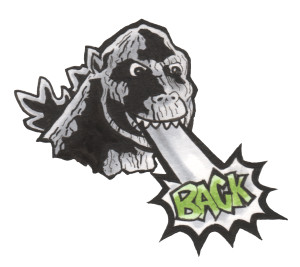
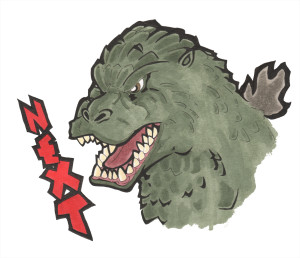
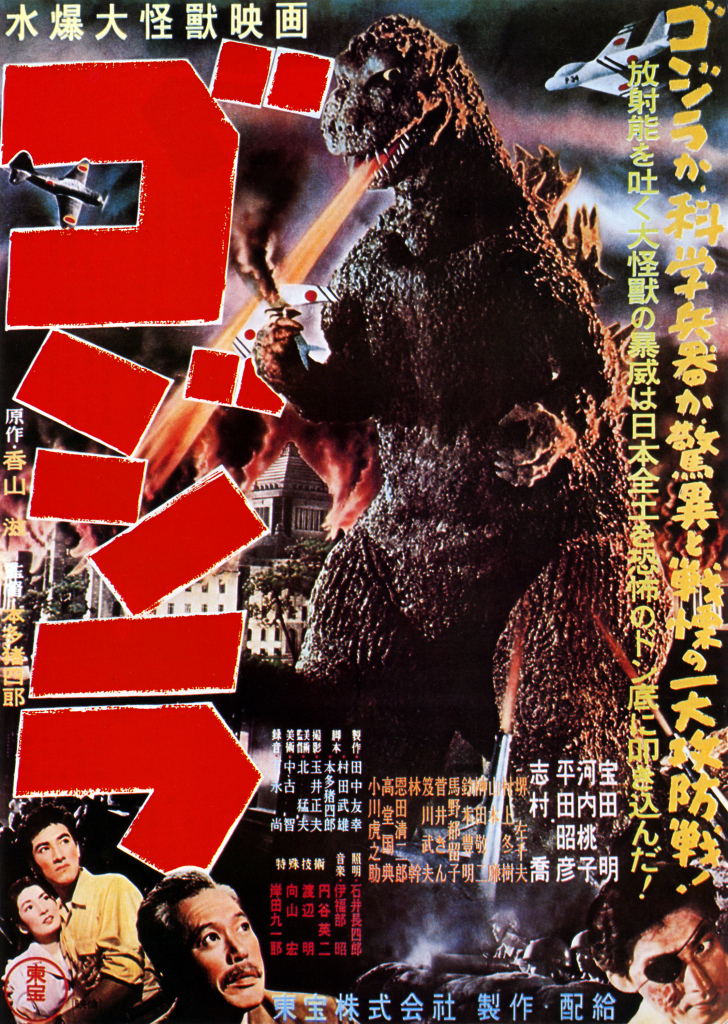
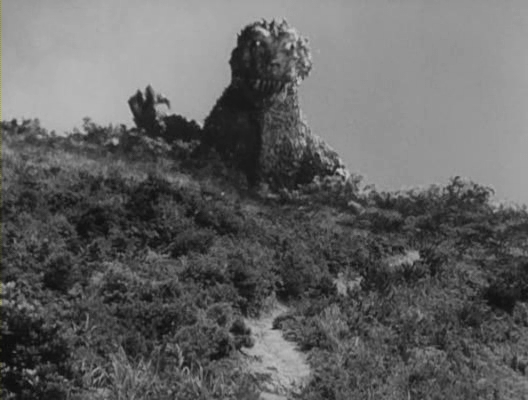 “Hey, Japan- your country looks really great!… FOR ME TO POOP ON!”
“Hey, Japan- your country looks really great!… FOR ME TO POOP ON!” 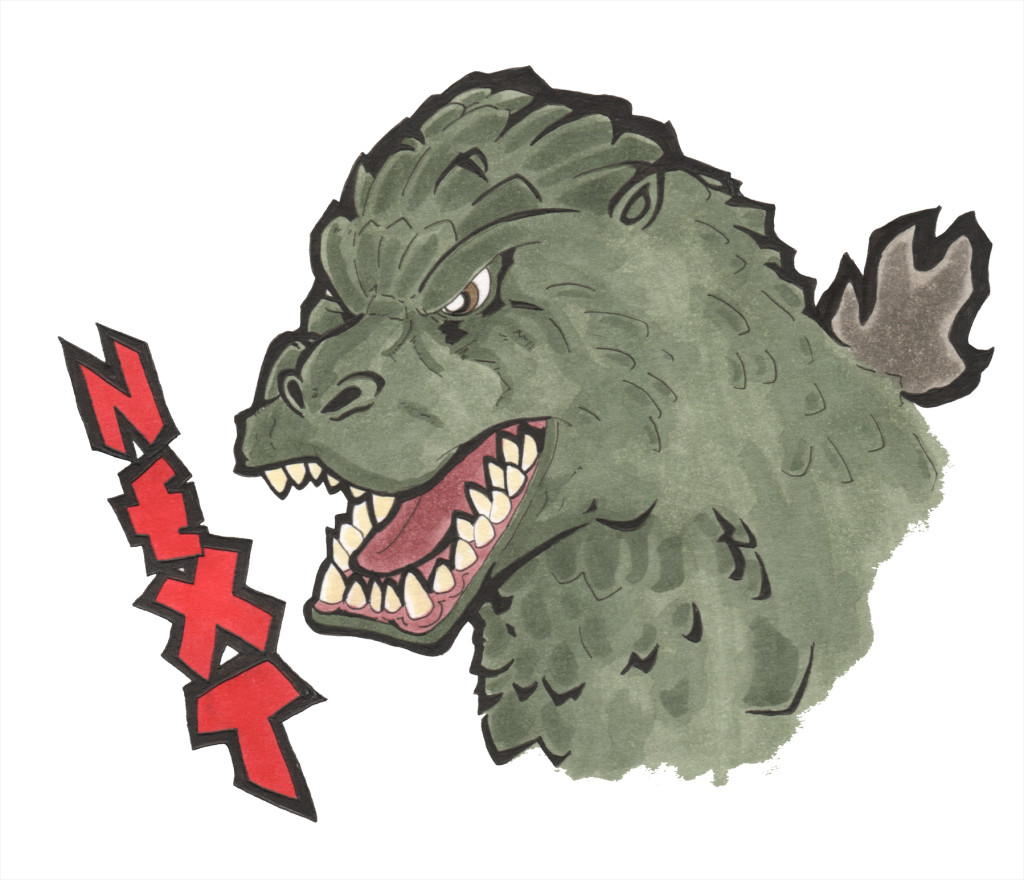
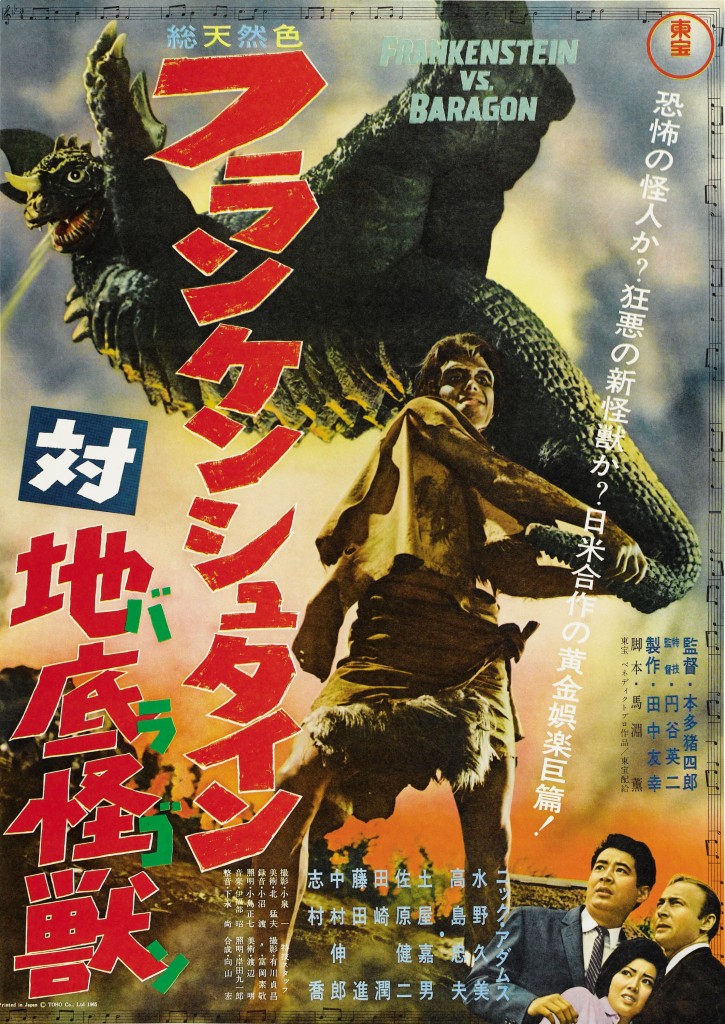
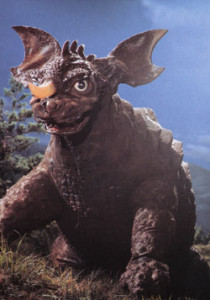 Behold- terror incarnate!
Behold- terror incarnate!